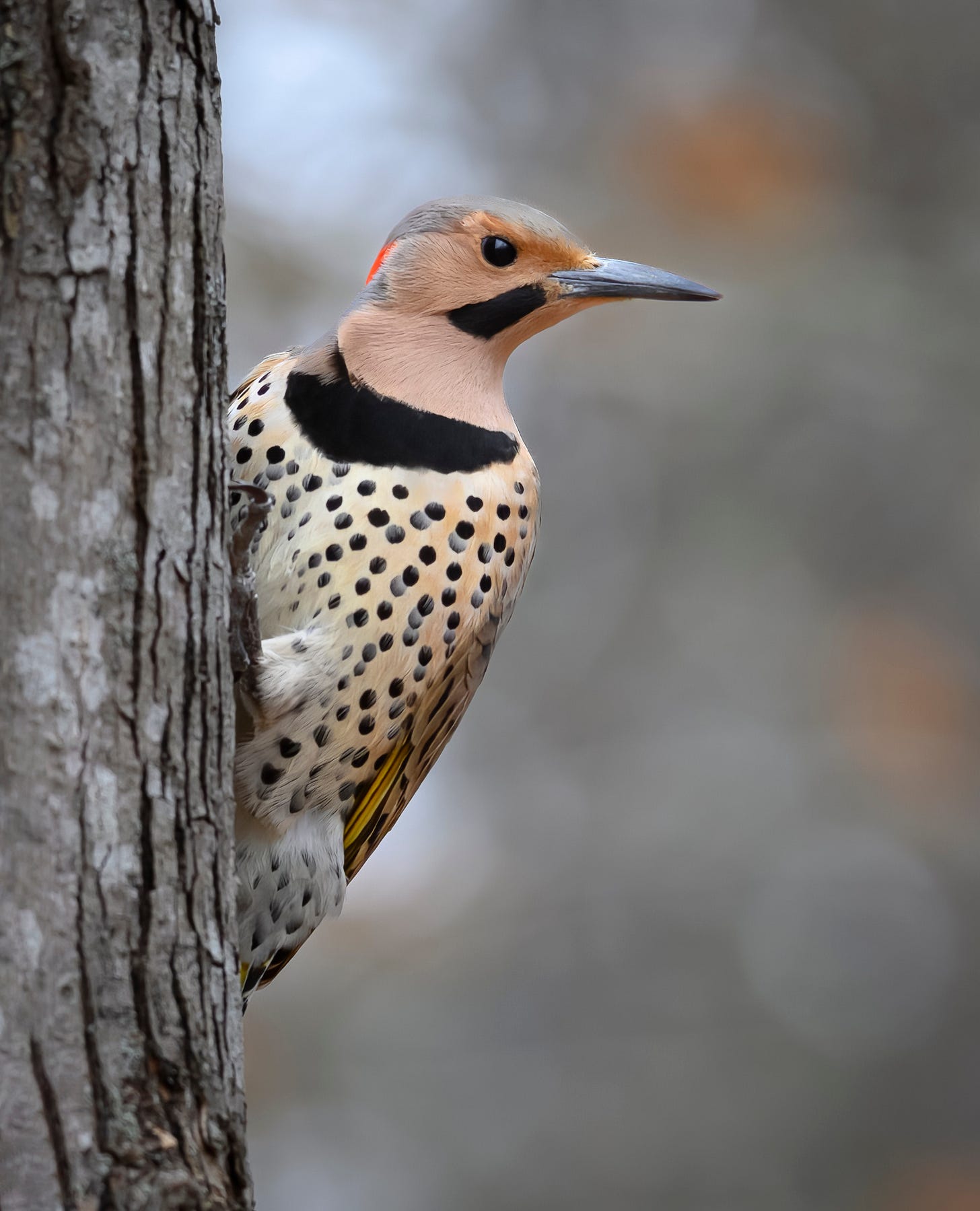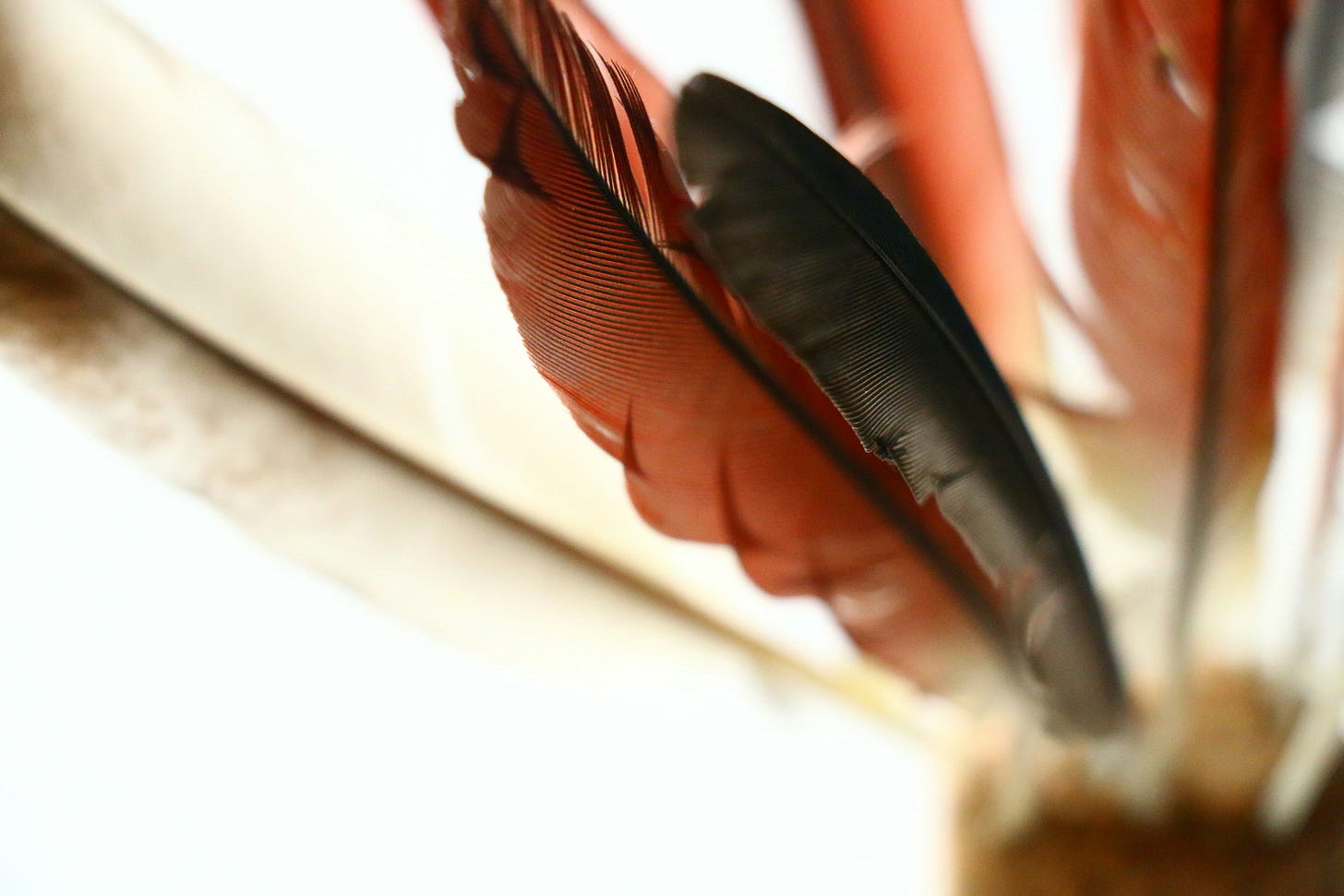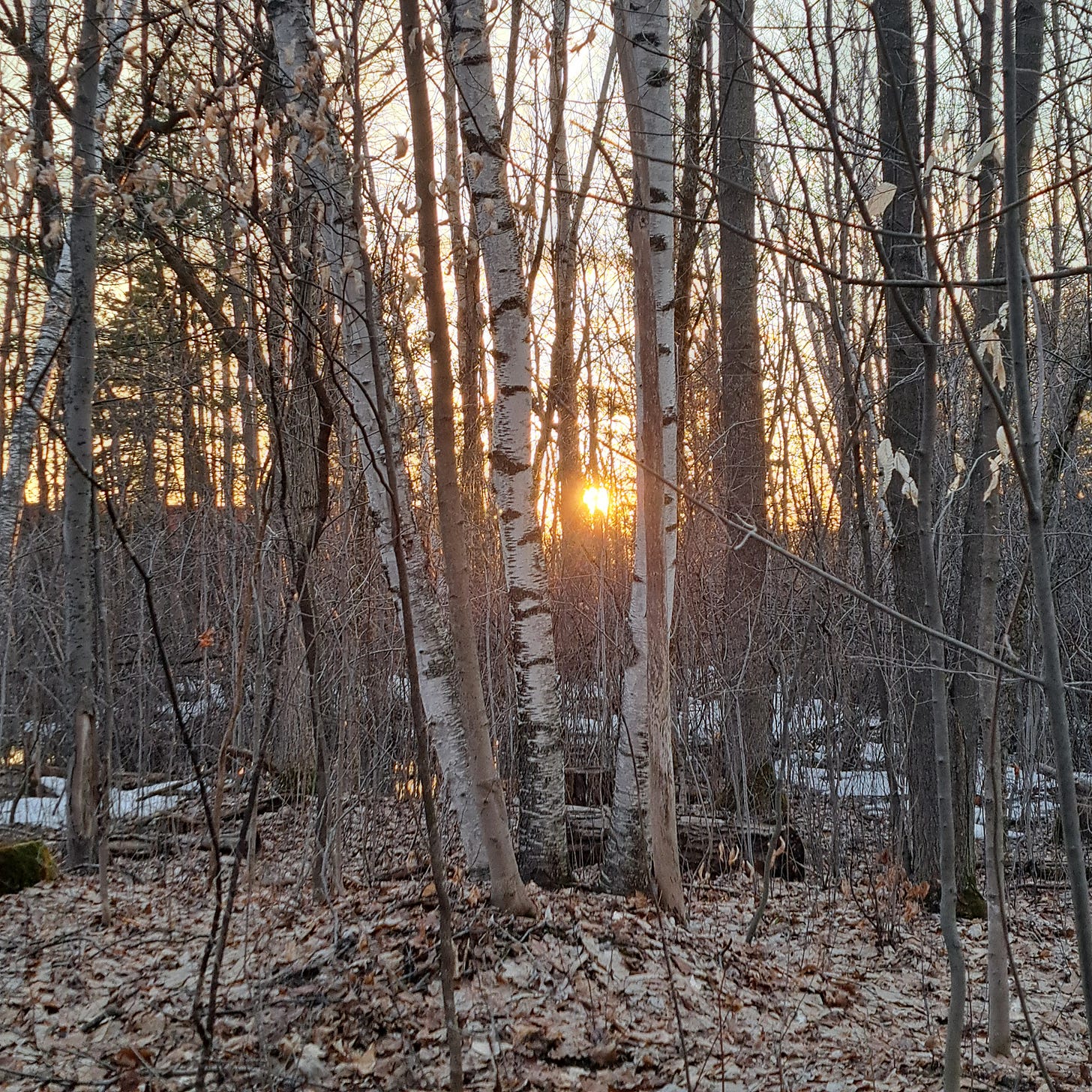Dear Fellow Dreamer,
To say we’re living in a period of great uncertainty is, of course, an understatement. And with this letter, in no way do I mean to minimize the collective challenges we’re facing. Or the pain so many of us are feeling right now. Here, I simply wish to offer ideas that may be of service—and a practice for finding spaciousness.
Carl Jung said, “Anyone who takes the sure road is as good as dead.” At various points in my life, I’ve held to that adage—perhaps never more so than now. Indeed, we all need a degree of predictability and a sense of security in order to consciously and purposefully create. Yet I remind myself that when things become too ordinary, comfortable, straight-ahead, and routine, we lose vitality. And so, in this stretch of global instability, can that reminder become a touchstone?
Cultivating the ability to be in the unknown—to accept uncertainty in service of listening to a voice that’s deeper than the surface clamour, and more life-giving than any repetitive din—that’s a way forward. Even in the face of madness on the world scene, such inner listening helps us to find meaning. Obviously, it’s not a substitute for staying informed of current events and taking action. But it offers balance.
A daily journal practice opens the channel to inner listening. Clearer seeing. Greater trust in one’s own decisions.
Today I’m sharing a few excerpts from Chapter 2 of my book Birdlight: Freeing Your Authentic Creativity. In this section, I write about the northern flicker, a subspecies of woodpecker I’ve come to view as emblematic of having a journal practice—for many of us, a vital part of the creative process. I’ve included links to various resources. Below the Birdlight excerpts and this week’s quote and video (a favourite old poem), I’ve also included some important updates. Please be sure to read to the bottom.
From Birdlight: Freeing Your Authentic Creativity, © Robin Blackburn McBride
Journal writing is a simple, focused activity. It requires only single pointed attention and the willingness to write freely. The physical act of pen-to-paper journalling becomes rhythmic when we allow ourselves to channel the messages that want to emerge. As soon as we judge our words and thoughts, fluidity and rhythm stop. Channeling language while suspending judgment is a key to finding flow and, ultimately, meaning. Years ago, I’d had an art teacher who used the term “mark making” in place of “drawing.” This substitution helped her students overcome their fear of making mistakes—how can you make mistakes if you’re simply making marks? Another art teacher told me that in order to get anywhere as an artist, a person has to use a lot of paper. She didn’t say “to waste” paper, but “to use” it—and freely! Nothing is a waste if we use it; that includes every experience of our lives. Journalling helps us to use everything. When we allow ourselves to write on a daily basis, regardless of our jobs, assignments, or chores, and no matter what our preferred modes of creative expression are, we make space for setting down the experiences and ideas that want to be seen. We connect with our own inner guidance. We relax. Thoughts flow freely. We cultivate awareness. We reflect. The more honest and uninhibited we are, the more rhythmic, intuitive, and fruitful the process becomes.
I make the connection between journal writing and the flicker quite naturally, because the industrious woodpecker links the observer to the rhythms of the world—the same world we can listen to and read for its messages. In setting the world down on the page, we see it more deeply. In Animal Speak, Ted Andrews writes that the flicker reminds us to “peck away at deception until truth is revealed.” Consider all the ways we deceive ourselves when we merely skim the surface of experience. We can so easily jump to conclusions, judging rashly and living our lives in reactive, reductive jot-notes, hurtling through a world of Internet searches, social media, email, news, ringing telephones, transit rides, deadlines, television, video games, and the like. We live in a culture of sound bites. Yet the mind is our most powerful tool. To cultivate awareness, to use the mind for honest expression and reflection, for discernment and clear intention, is to employ our most valuable “technology.” The practice of journalling daily shows us what’s on our minds. Without reflective time, without the freedom to set down experiences, to see where the mind leads on the page, to witness even our own noticing, there is little opportunity for finding depth and stillness. Andrews writes that the flicker’s drumming “is a reminder of the natural rhythms of the universe and that when we are not in synchronicity with them, things do not work for us.” Making room for daily journalling invites a life wherein things do work for us.
Choosing to Trust Instead of Blaming
For the artistic soul, regardless of occupation, age, or stage of development, consciously inviting creativity into daily experience is essential to well-being. Yet so often, naturally innovative, expressive people find themselves out of balance, cut off from the peace of creative flow. They blame external conditions for a sense of loss, and feel the pain of abandoning their gifts acutely. I write from personal experience—for years I blamed my own choices for separating me from a sense of fulfillment. I blamed the need to survive, to please, and to be a provider. I blamed an overly full schedule for robbing me of a life I felt intuitively drawn to and blocked from at the same time; I didn’t know how to transcend the paradox. It took years for me to understand that by crowding out daily creative expression, putting it last on my priority list instead of first, I was actually abandoning a core part of myself, sabotaging my trust in life. The only way to trust again was to make creative expression and personal development time my first priority of the day.
When I began putting journal writing first, getting up earlier to make it happen, my whole life changed. While some of the initial effects of that shift were disruptive and even painful at the time, all were liberating and eventually brought the joy of consciously creating new pathways. The shift itself was growth; certainly it was better and healthier than staying stuck.
Committing to daily journal writing is an ongoing act of trust. It helps build what pioneering success author Napoleon Hill calls “habitforce.” It contributes to the development of self-reliance, something Hill claims is necessary for the persistence required to achieve creative goals. Journalling is also meditative, emotionally demanding, and humbling. In her famous manifesto for writers, Writing Down the Bones, Natalie Goldberg compares daily writing with Zen Buddhist practice; she honours the beginner’s mind as “what we must come back to every time we sit down and write.” Being beginners, we remain fresh—and also vulnerable. Allowing ourselves to be constructively vulnerable, to take emotional risks for the sake of growth, is crucial not only to being an artist of any kind, but to being open to experiencing beauty and connection. In her book One Continuous Mistake: Four Noble Truths for Writers, author Gail Sher also likens writing to Zen practice. The last of her “noble truths” is my favourite, because it redefines failure in the context of creative expression: “If writing is your practice, the only way to fail is not to write.” So often, people fear making marks on paper because they fear being judged for the quality of their output. But if failing is simply not doing the thing you want to do, fear of failure is easily overcome. One of my most instructive and inspirational creativity teachers has been Julia Cameron, who urges artists simply to “show up at the page.”

Simple is good, but not always easy. It requires discipline. Building trust can be simple if one commits to a daily creative practice, and trust is a crucial key—one which ultimately builds confidence.
The Fruit of Persistence
The flicker, remember, is a member of the woodpecker family, and woodpeckers hold a large place in the world of avian folklore. The Norse ancestors saw the red streak on a woodpecker’s head as a link to their god Thor’s fiery red hair and his thunderbolts. They likened its beak to Thor’s hammer, and drew a parallel between the holes it makes in the trees and those caused by lightning.
The woodpecker is a symbol of great power; its habitforce is divine. In his book Flights of Fancy: Birds in Myth, Legend and Superstition, author Peter Tate points to an association made in Scandinavian mythology between the woodpecker (in old German, Bienwulf, meaning “bee eater”) and Beowulf, the hero who slew the monster Grendel. My favourite of Tate’s collected folk beliefs on the woodpecker comes from Germany, where traditionally people believed it to possess secret knowledge of where to find the magic herb springwort. If “the entrance to a woodpecker’s nest was blocked up, the bird would straightaway fly off to find the herb and hold it against the obstruction, whereupon a hole would immediately appear. Springwort was therefore ideally suited to open locks.”
And blocks.
Most people who feel creatively blocked and frustrated are unhappy because on some level they’ve stopped believing in their own potential. As a young woman I felt most torn and sad when I was filled with creative energy and yet lacking in a living structure that could channel it. I had not yet learned that the only way I could fail as a writer was not to write. Eventually I discovered how a daily journal practice created pathways of discipline and trust in my mind. It also helped me to reconnect with a sense of fun, play, authenticity, and laughter. To regain creative confidence, I had to learn how to become like a child.
Red Feather
A flicker sounds above me in a broken tree, an extraordinary bird well disguised among the ordinary. Flickers live in my urban neighbourhood, but only when I found one dead several years ago did I discover their subtle, breathtaking beauty. The little bird’s motionless presence in my yard compelled me: the fawn-and-white speckled breast; the yellow hidden inside the striped wings; the sleek black tail feathers; the red-streaked head with its black crescent moon at the throat. I returned many times to study it, not wanting to remove it from the place where it had fallen.
A gift.
Each aspect of the flicker’s appearance bears symbolic meaning in at least one culture. For example, the red feathers on its head have a particular import for the Pueblo people, who hold that a red feather on a prayer stick means the same energy used for war can be used for healing.
Self-knowledge is found on a healing path. It keeps us seeking and finding, visioning and creating anew. Gifts are gifts because we make them so. Choosing not to be at war with oneself, with life, but to consciously and courageously create and heal, in any circumstance, is a true gift. In accepting it, we begin to make a paradigm shift and learn to accept forward movement, beyond the established comfort zone, into new territory.
At midlife, I made an active decision to release an old way of being and to make marks in a new way. The word “mark” comes to us through the Saxons: merke, meaning “sign” or “boundary.” The Norse word morke also meant “forest”—often the marker of a frontier. Latin margo meant “margin,” and Old Irish mruig meant “borderland.” I’ve chosen to live and create at the borderland between the known and the unknown. Making friends with fear, I’ve come to accept its presence as one which tells me when I’m at that place. And something in me strives ever to expand the territory, to live at the frontier and push beyond old boundaries.
As a fiction writer, I ask my characters to take me to the emotional frontiers of knowing, seeing, and experiencing. As an artist and a coach in creativity, dream building, and transformation, I now take risks to serve others in ways leading positively and continually to growth: ways my young-woman self yearned for and my child self believed in completely. In the melting snow, I feel that child emerge in me again, my life a spring, regardless of “conditions.”
Where is your frontier? Invite your fear to show you. Your creative dream isn’t big enough unless it scares you. What dream scares you enough, and holds enough gifts for you and others, that you know it’s worthy—not only of your time and efforts, but of you? What one action could you take today for your dream?
If you haven’t got a copy of Birdlight, and would like one, find it here. I’ve kept the price of the e-book very low. If you’d like to read more about journalling, including resources and some adventures I’ve had, such as discovering my first novel, read “Your Journal as a Catalyst for Wonder.”
Quote of the Week
“In my dream, the Angel shrugged and said, ‘If we fail this time, it will be a failure of imagination.’ And then she placed the world gently in the palm of my hand.”
—Erica Jong
Video of the Week
For National Poetry Month
What’s Ahead
It’s been a time of looking inward for me—going back into the creative cave as a new story (my third novel) has begun speaking to me. Like every project, this one is showing me how I need to honour it, and my own energies, in the process of creation. In order to support my writing, I’m also drawn to work in the world in new ways.
And so, after April, instead of returning to a weekly schedule of sending letters, I’m going to continue on a (mostly) bi-weekly basis. I hope you’re enjoying them, and that the pacing works. Let me know your thoughts. I love hearing from you—about what resonates, and especially, about your own experiences. Your emails are wonderful. All the hearts, comments, and shares in the Substack app mean so much, too. In addition to making me smile, they help my posts find new readers.
Now for news of a change…
For the time being, I’ve decided to put a hold on creating new paid content. The Wonders Within series (over four hours of coaching workshops) is in place for anyone who’s upgraded, or who wishes to upgrade, and would like to make a strong start at building a dream. For paid subscribers, I’ve also posted a powerful 17-minute audio visualization for building creative confidence. Eventually there will be other audios, but not predictably at the moment.
My heartfelt gratitude goes to those of you who’ve chosen to support my work by upgrading your subscription. I’ll be reaching out to each one of you to check in, and to offer value in the way of a personalized Zoom consultation about your goals and creative work. I want your subscription to more than pay for itself.
For any subscribers interested in exploring coaching, I am also available for a complimentary session. Reach out to me.
I’m not going away, simply finding a new balance.







For me, the part about journaling is the handwriting aspect. My handwriting is terrible, and I've grown to dislike writing by hand. But sometimes that is the only way the thing inside me I want to say comes out, by making marks on a piece of paper. I'm glad that at this time in my life, I'm finally taking the time to write the stories I have wanted to write for so long.
Thanks for this Robin! So many ideas I embrace fully. I am a daily journaler and cannot imagine not having such a place to hold my inner world.
Julia Cameron and her 'Artist's dates' scared the heck out of me, but I did them in early sobriety, needing to summon my curiosity about living.
And Northern Flickers sure are boisterous mo-fos who know how to take up space (a lesson for the timid little girl in me), and I get a thrill every time they visit my feeders! One left me a speckled feather with that gorgeous neon orange and I have it on an alter.
Blessings to you on finding balance as you create another book!